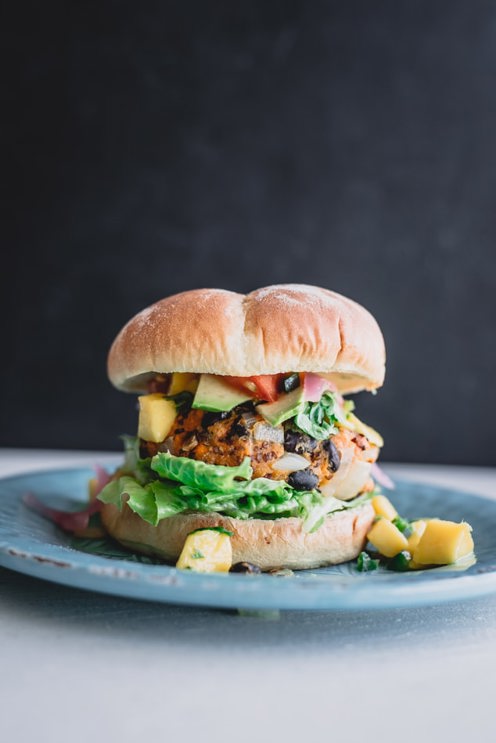Will plant-based burgers smell and taste just like the real thing soon?
For many meat eaters, there's nothing better than biting into a mouth-watering burger. However, there is a growing trend of people now open to trying plant-based alternatives, as long as they are similar in taste, odor, appearance and texture of real beef. Researchers are reporting that the aromas of a couple of plant-based burgers come close to the real deal when they are cooking, but it’s still a long journey for others to catch up.

The researchers presented their results at the fall meeting of the American Chemical Society (ACS). ACS Fall 2021 is a hybrid meeting which was held virtually and in-person Aug. 22-26, and on-demand content will be available Aug. 30-Sept. 30. The meeting featured more than 7,000 presentations on a wide range of science topics.
“During the last several years, increasing awareness of the impact of meat production on climate change, as well as meat shortages during the pandemic, have made people more accepting of plant-based alternatives,” says LiLi Zyzak, Ph.D., the project’s principal investigator at Eastern Kentucky University. “There are a lot of products out there, and food companies are doing interesting research, but nobody ever publishes anything because it’s a trade secret.”
While plant-based meat products have been available for more than 20 years, modern plant-based alternatives are much closer to replicating traditional meat compared to their earlier counterparts. Many food companies have started doing extensive research on how to make soy and pea proteins taste more like beef.
Raw hamburger has very little odor, but cooking it releases hundreds of volatile compounds that contribute to taste and aroma. “The problem with plant-based burgers is that the plant protein itself contributes a strong odor,” says Zyzak. “For example, pea protein smells like green, cut grass, so companies have to find a way to mask that aroma. Some use heavy seasonings.” Another challenge is determining the correct blend of vegetable oils to mimic the fatty meat smell.
Although Zyzak admits she is a “through-and-through meat and potatoes person,” she was curious how plant-based burgers stack up. “We wanted to give consumers an idea of what’s out there so that they can make informed decisions at the grocery store,” she says.
The researchers analyzed the aroma compounds produced by cooking real hamburger and eight popular brands of plant-based burgers. As a first step, they cooked the burgers and evaluated the aromas using five descriptors: meaty, fatty, buttery, sweet and roasted. Then, they used gas chromatography – mass spectrometry (GC/MS) combined with olfactometry to correlate the aromas with specific odor compounds. To do this, the team injected volatiles from the cooking burgers into the GC/MS instrument, which separated the compounds. Some of the sample was diverted to a sniffing port, where a person clicked a button when they smelled an individual odor. Using a microphone, the person said which of the five descriptors it smelled like (for example, “buttery”). The remaining sample was analyzed by MS, and the researchers correlated specific compounds with the aroma smelled by the person at a certain time.
The compounds that caused the plant-based burgers to differ from traditional hamburger were then identified by the team. Of those tested, the Beyond Burger from Beyond Meat most closely resembled the odor profile of actual hamburger, with meaty, fatty and grilled meat characteristics from the compounds 1-octen-3-ol, octanal and nonanal; however, it was still considerably different from the real thing. Another brand had the closest appearance to real raw hamburger, but upon cooking, it had a yeast- or bread-like odor, with higher levels of methyl butanals and propionic acid. A number of the other brands had heavy seasonings that released strong garlic or barbecue-sauce-like aromas.
Ultimately, Zyzak would like to use what she’s learned to produce a mixture of odor compounds that closely mimic hamburger aroma.
Reference
Presented at the fall meeting of the American Chemical Society, Aug. 22-26 2021.
To read the full article, click here